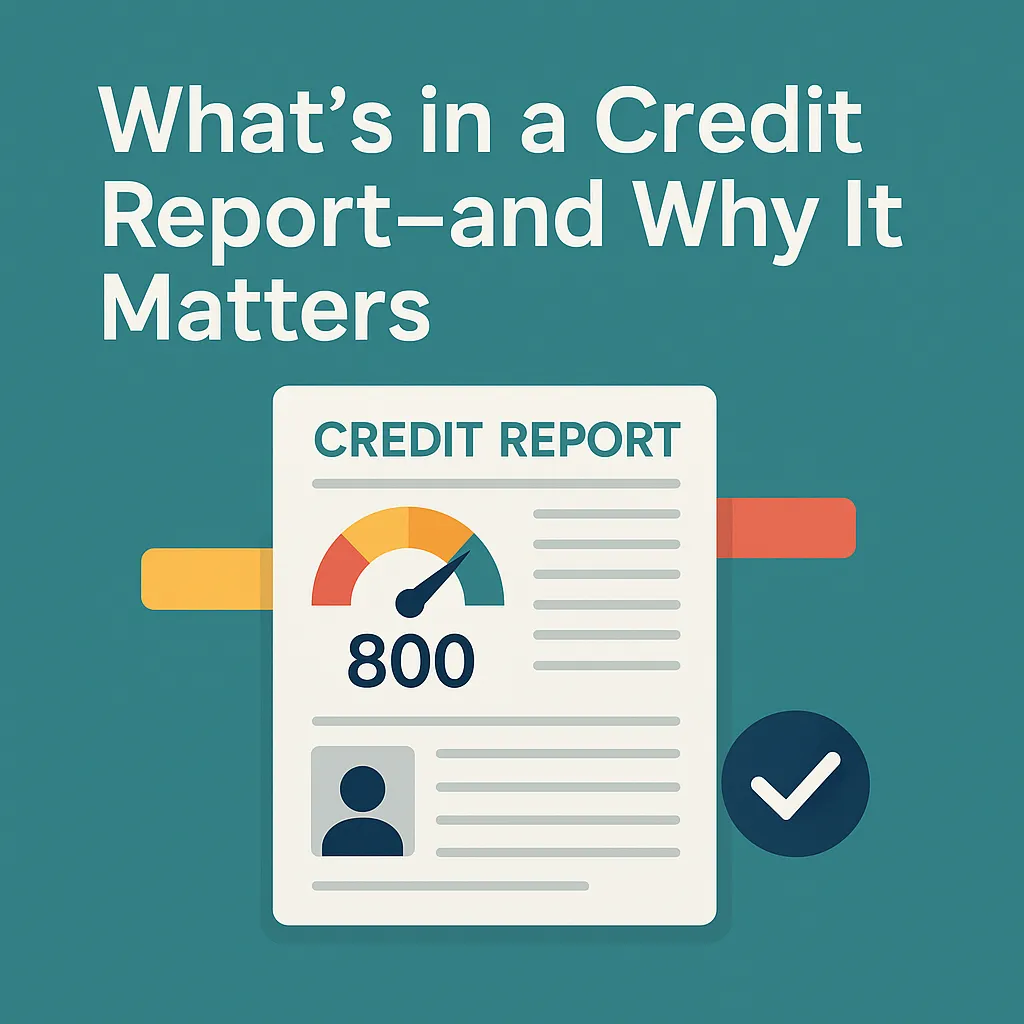
What's in a Credit Report - and Why it Matters
🔰 What’s in a Credit Report—and Why It Matters
By Atlas, Credit Cure Correspondent
Let me ask you something: when was the last time you looked at your credit report?
For most people, the answer is either “never” or “uhh… maybe once?” And honestly, we get it. Credit reports have a reputation for being boring, confusing, and full of numbers that make your eyes glaze over. But here’s the truth:
Your credit report is one of the most important documents in your financial life.
And if you don’t know what’s in it—you’re flying blind.
So let’s pull back the curtain. No complicated jargon, no fear tactics. Just a real conversation about what your credit report actually includes, why it matters, and how it affects your everyday life.
So… what is a credit report, anyway?
Think of your credit report like a financial report card—but instead of being printed once a year and stuck on the fridge, it’s updated constantly.
It’s a detailed history of how you’ve used credit over time. Lenders, landlords, insurance companies, and even some employers may check it to decide if you’re someone they can trust to pay on time, follow through on agreements, or handle responsibility.
And here’s the kicker: you don’t need to give permission for everyone to see your score—but they do need your permission to access your full report. That’s an important distinction.
What’s actually in the report?
Good question. Here’s what’s inside, section by section:
1. Personal Information
This includes your name, birthdate, social insurance number, current and past addresses, and sometimes your employer (if it was listed when you applied for credit).
Fun fact: This section doesn’t affect your score, but it’s important to keep it accurate.
2. Credit Accounts (aka “Trade Lines”)
This is the meat of the report. It lists every credit product you’ve opened, like credit cards, car loans, student loans, mortgages, and lines of credit.
Each account includes details like:
The name of the lender
The type of account (credit card, installment loan, etc.)
When you opened it
Your credit limit or loan amount
Your current balance
Your payment history
Yes—every missed, late, or on-time payment is tracked here.
3. Credit Inquiries
This shows who has pulled your credit recently. There are two kinds:
Soft inquiries (like checking your own score or pre-approvals) don’t affect your score.
Hard inquiries (like applying for a loan or credit card) do.
A couple of hard pulls aren’t a big deal, but if you’re applying everywhere in a short span of time, it can raise red flags.
4. Public Records & Collections
This is the section nobody wants to see anything in—but it’s important to understand.
It can include:
Bankruptcies
Consumer proposals
Accounts sent to collections
Judgments or liens (if applicable)
These items can really impact your score and may stick around for several years, depending on the situation.
5. Credit Score (Optional)
Some reports include your credit score, but not always. Your score is calculated based on the data in the report, so even if the score isn’t listed, the info that creates it is all right there.
Why does this all matter?
Because decisions are being made based on that information.
When you apply for a mortgage, lenders aren’t guessing—they’re reading your credit report like a resume.
When you try to rent an apartment, landlords want proof you’ll pay rent on time.
Even car leases, insurance premiums, and utility accounts can involve a credit check.
If there’s something inaccurate on your report—like a missed payment that wasn’t actually missed—it can cost you real money.
How can you check your credit report?
You’re entitled to free access to your credit report from both major bureaus in Canada:
Equifax Canada: https://www.consumer.equifax.ca
TransUnion Canada: https://www.transunion.ca
You can also use tools like:
Borrowell (www.borrowell.com)
Credit Karma (www.creditkarma.ca)
Those platforms don’t show everything, but they’re good for regular check-ins.
At Credit Cure, we recommend checking your full reports from both bureaus at least once a year—and any time something seems off.
What if you find an error?
It happens more often than you’d think.
If you see something that doesn’t belong on your report—like an account you didn’t open or a payment marked late that wasn’t—you have the right to dispute it.
Each credit bureau has a dispute process, and it’s worth the time. One correction could raise your score, improve your chances of approval, or lower your interest rate.
Not sure how to do it? Your Credit Cure coach can walk you through the process step-by-step.
Final Thoughts
Your credit report is not something to fear—it’s something to know. It’s the story of your borrowing life, and like any good story, you should be the one writing it.
Understanding what’s in your credit report puts the power back in your hands. And once you know what lenders see—you can start shaping that story in a way that works for you.
So go ahead. Pull your report. Take a look. Ask questions.
You might be surprised by what you learn—and how much control you really have.